From Hoi An to Hue: A Journey Through Vietnam’s Heart
Traveling from Hoi An to Hue isn’t just about reaching a destination—it’s a scenic and cultural travel. Covering 120 kilometers, this route unveils the beauty of central Vietnam, blending natural wonders, historic sites, and local flavors.
Opting for the Easy Riders service transformed the journey into an immersive experience. For €44, this day-long motorbike tour included stops at breathtaking landmarks and culminated in Hue, Vietnam’s former imperial capital.
Marble Mountains: Spiritual Peaks of Da Nang
The first stop was the Marble Mountains, (Ngũ Hành Sơn in Vietnamese, meaning “Five Elements Mountains”) rise dramatically from the coastal plains of Da Nang in central Vietnam. This cluster of five limestone and marble hills, each named after an element—Thuy (Water), Moc (Wood), Kim (Metal), Tho (Earth), and Hoa (Fire)—stand as natural and cultural landmarks roughly 8 kilometers southeast of Da Nang.
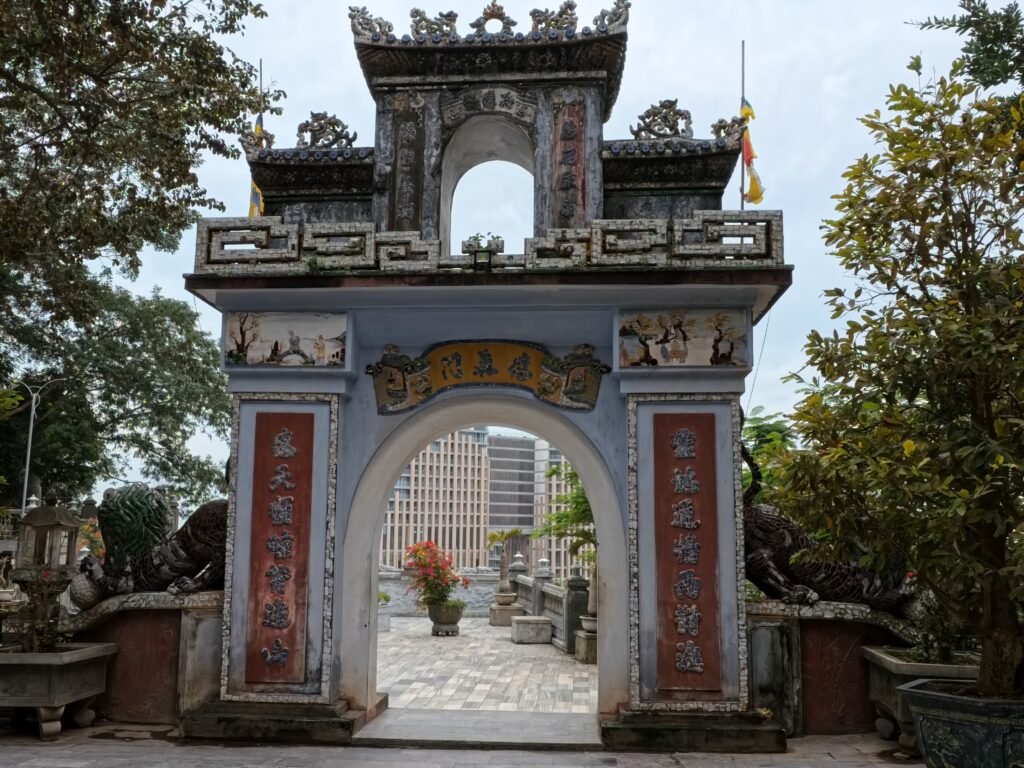
Climbing its stone steps led to panoramic views of Da Nang’s coastline and a network caves, some adorned with Buddhist shrines. This spiritual sanctuary offered a serene beginning to the journey.
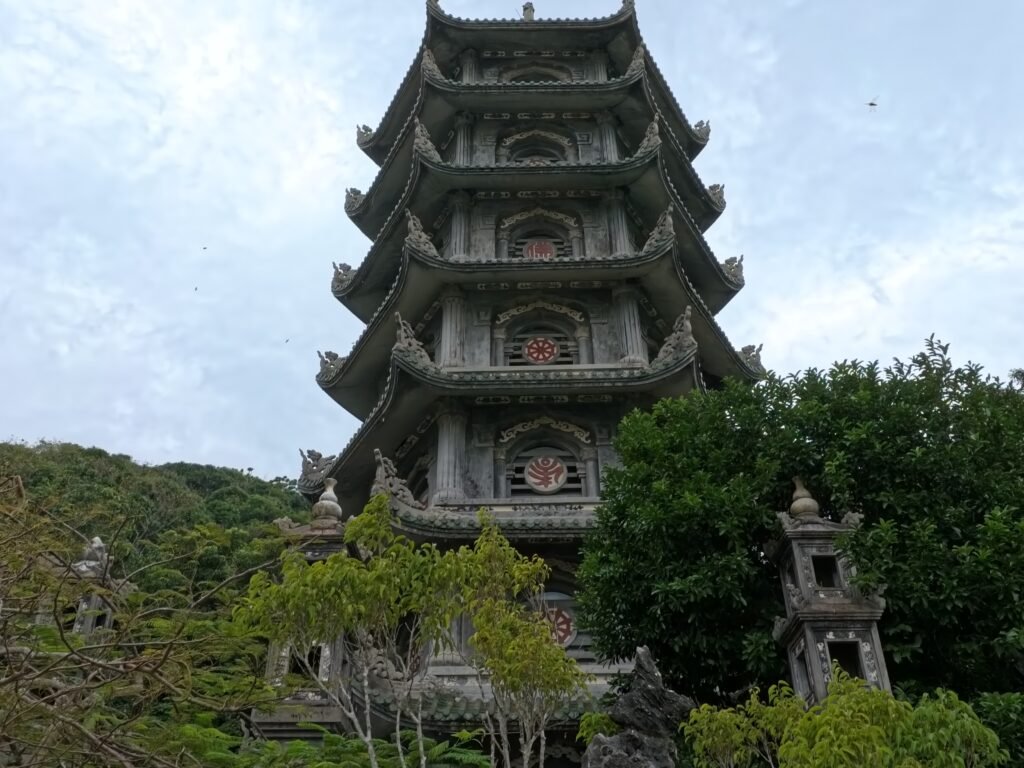


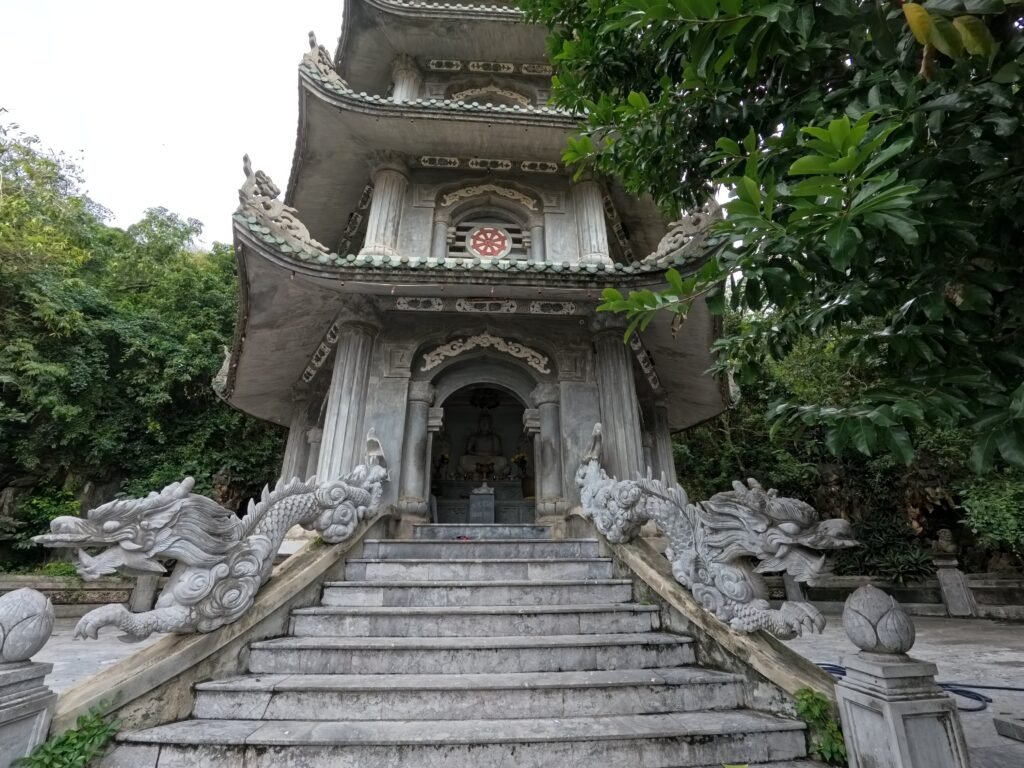
Geological Features:
- The mountains are composed of marble and limestone karst
- Numerous caves and tunnels riddle the mountains’ interiors
- The highest peak reaches about 100 meters above sea level
- Natural grottos and caves showcase impressive stalactites and stalagmites
Cultural Significance:
- Home to several Buddhist and Hindu sanctuaries
- Features numerous pagodas, including the famous Linh Ung Pagoda
- Combines natural beauty with religious and historical importance
Hai Van Pass: The Ocean Cloud Pass
As the road climbed the Hai Van Pass, the scenery transformed into a breathtaking blend of mountains and sea. This iconic pass, called the “Ocean Cloud Pass,” stretches along the Annamite Range, separating Da Nang from Hue. Its winding roads, flanked by lush greenery on one side and the East Sea on the other, are a dream for motorbike enthusiasts.
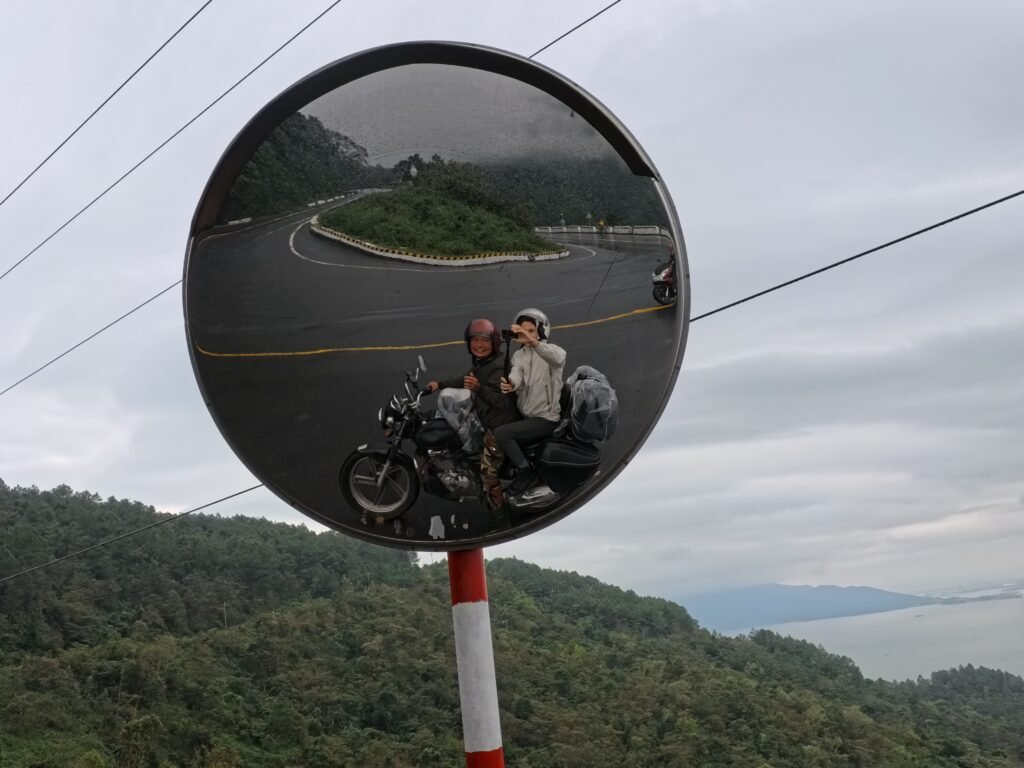

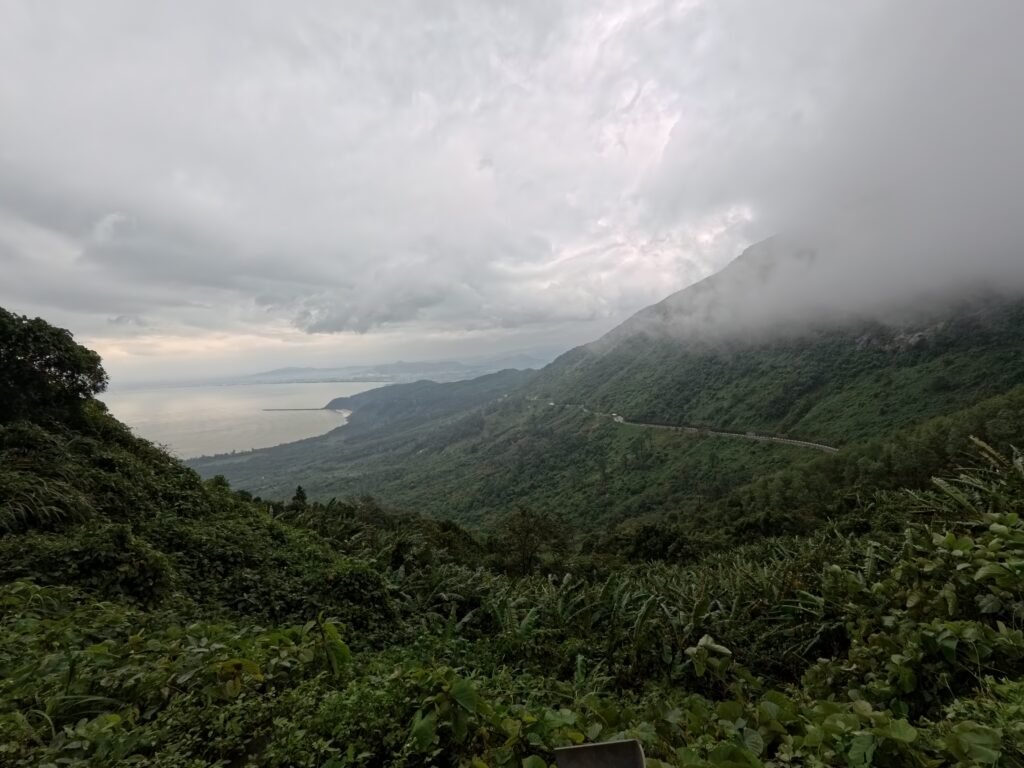

Hai Van Pass, also known as “Hai Van Quan,” is celebrated as “The World’s Most Majestic Gate”. Nestled nearly 500 meters above sea level, Hai Van Pass is a natural boundary between Da Nang to the south and Thua Thien Hue province to the north.
Its historical importance is underscored by the complex military architectural works built during the Nguyen dynasty, including gates, storehouses, and cannon forts.
Visitors are captivated by panoramic views of lush greenery and winding roads, making Hai Van a must-see destination for travelers exploring Central Vietnam. Located about 28 kilometers from Da Nang city center and 90 kilometers from Hue city center, Hai Van Pass is a testament to the region’s natural beauty and strategic significance throughout history.
Savoring Local Flavors on the Way from Hoi An to Hue
Midday brought a delicious lunch at a seaside restaurant. Freshly caught fish and oysters, seasoned with herbs and peanuts, were served alongside traditional Vietnamese dishes.


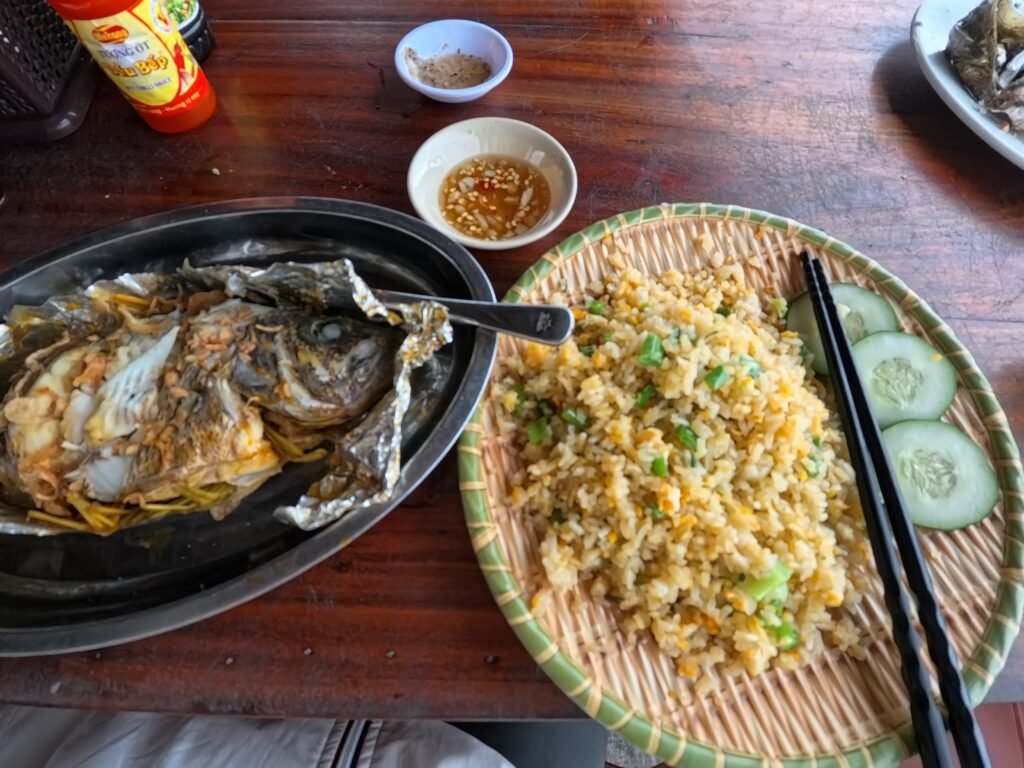
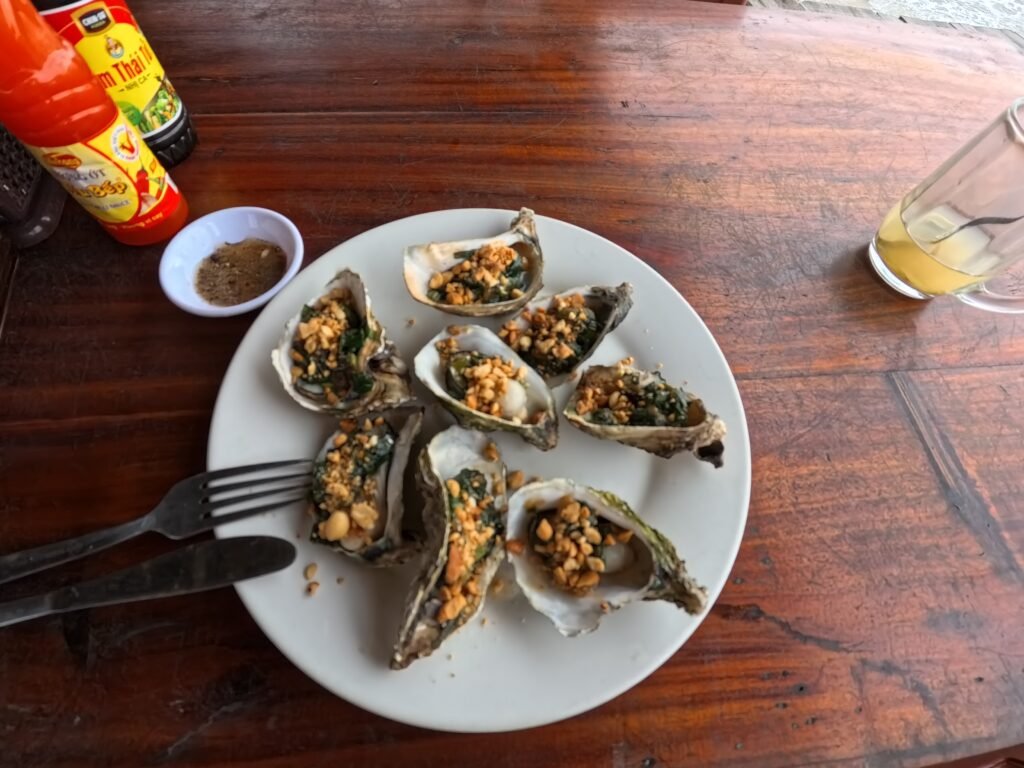
The nearby fishing village in laguna supplied much seafood, emphasizing the region’s connection to its waters.
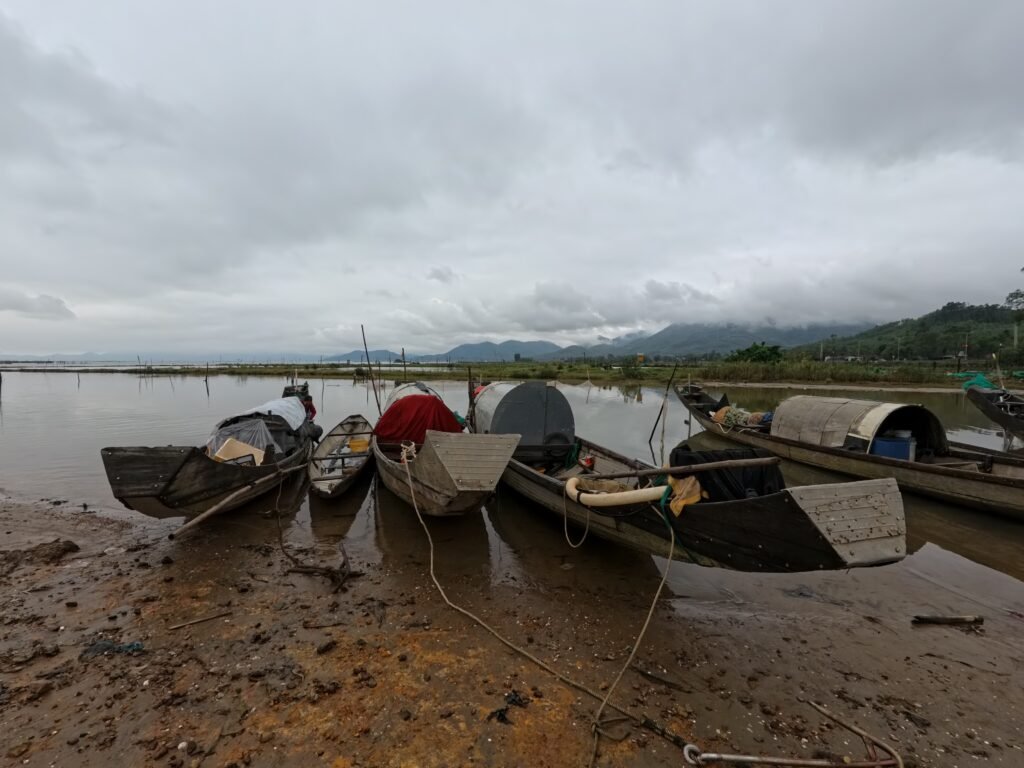
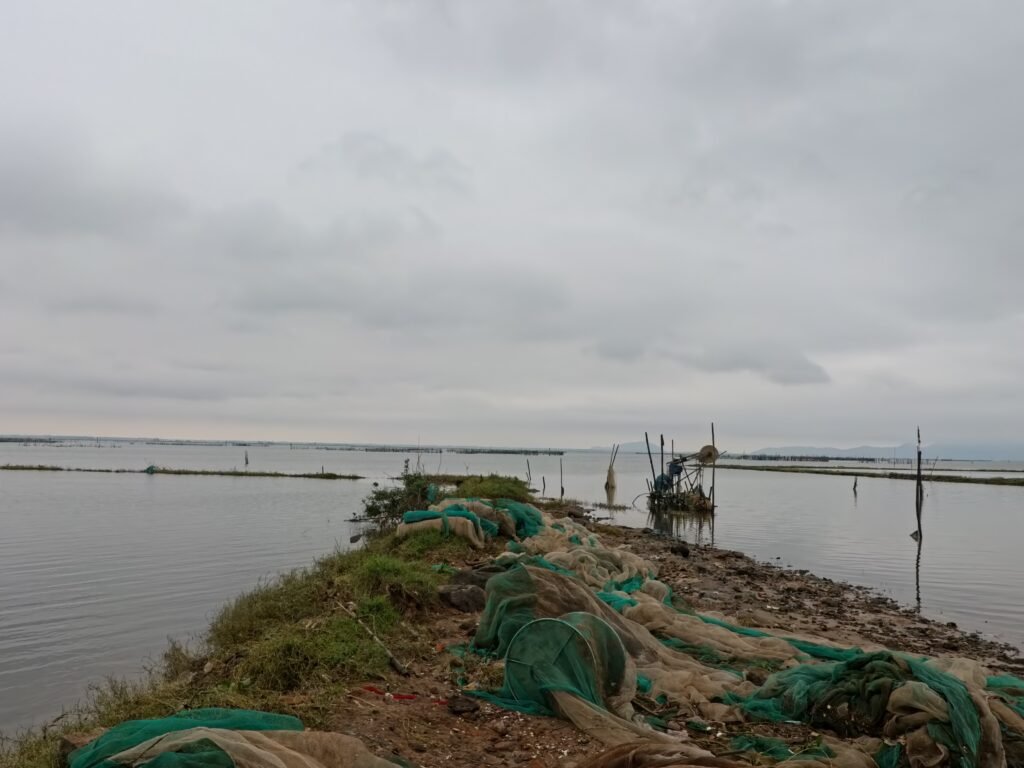

Hue’s Imperial Tombs: Tu Duc and Khai Dinh
As the tour neared its end, we visited two of Hue’s most famous imperial tombs, tucked away in the countryside close to Hue.
Tu Duc Tomb: Built during the reign of Emperor Tu Duc, this sprawling complex reflects his poetic soul. Tu Duc’s Tomb—a mesmerizing 12-hectare complex that feels more like a secret city than a final resting place. Built between 1864 and 1867, this isn’t a typical tomb; it’s an architectural masterpiece where Emperor Tu Duc once lived, wrote poetry, and contemplated life among serene lakes and graceful pavilions.
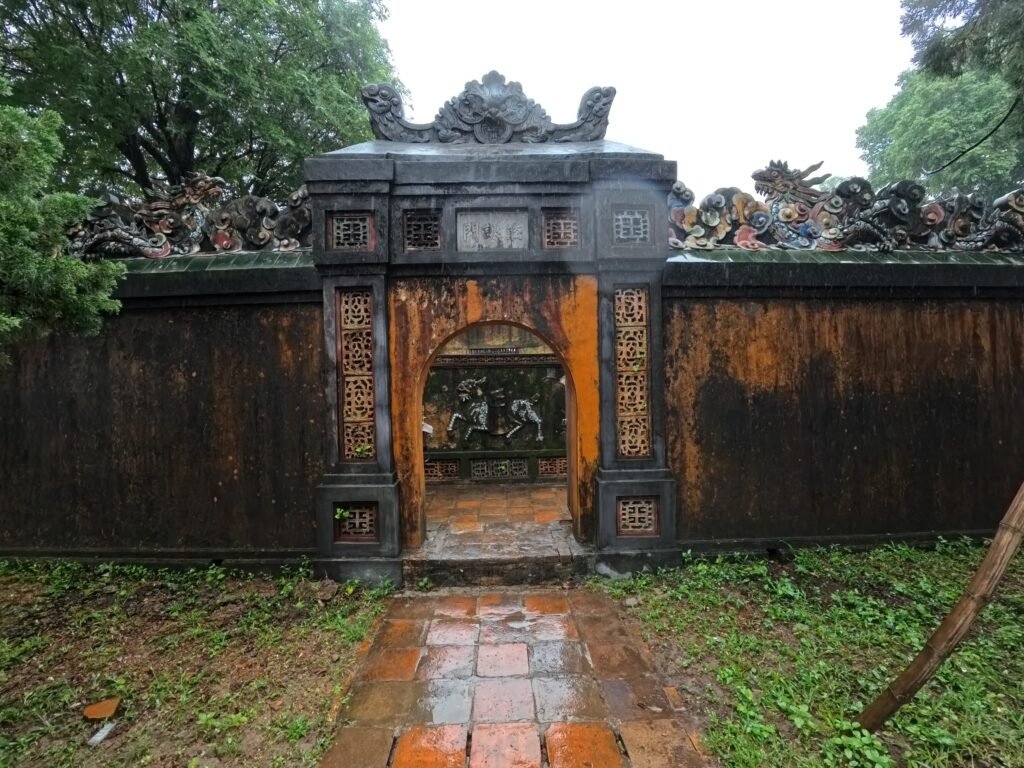

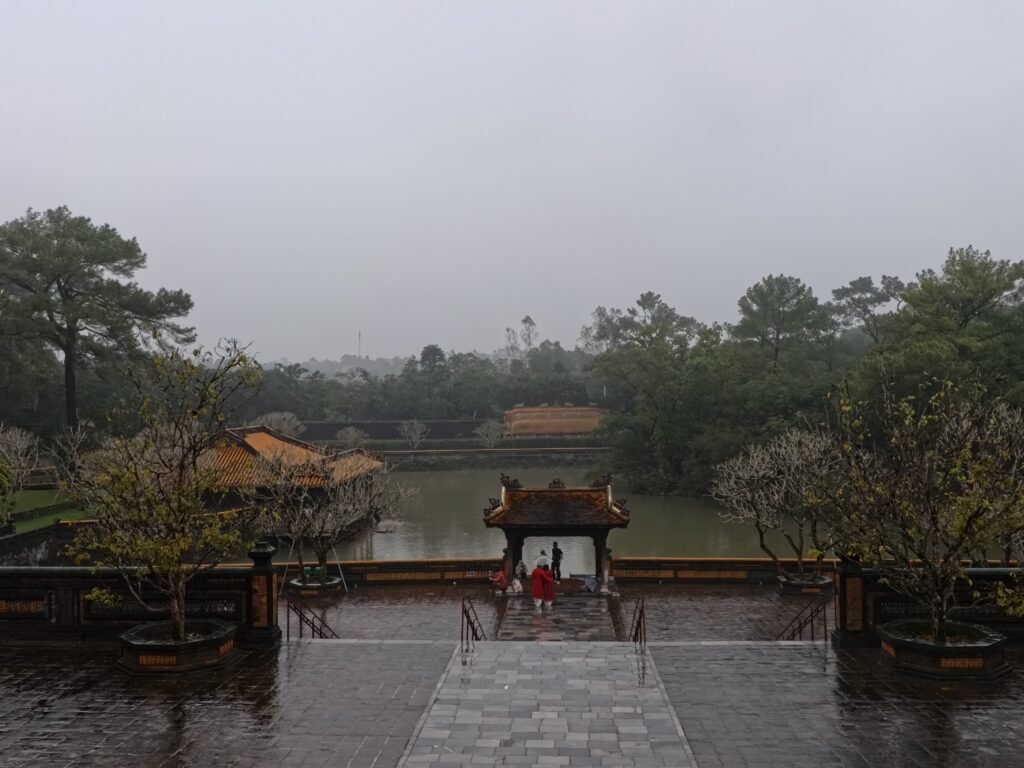
Khai Dinh Tomb: In contrast, this tomb is a fusion of Vietnamese and European styles, reflecting the modern influences of Emperor Khai Dinh’s reign. The intricate mosaics and towering dragon pillars are a testament to his vision.
Exploring Hue: The Imperial City
Hue, located on the banks of the Perfume River in central Vietnam, served as the seat of the Nguyen Dynasty for 143 years. I explored its Imperial City, a UNESCO World Heritage Site. The centerpiece, the Thai Hoa Palace (Palace of Supreme Harmony), exemplifies a harmony of yin and yang, symbolizing the balance between heaven, earth, and the emperor.






Built in 1805, the palace hosted 13 Nguyen emperors. Its gates and pillars are adorned with carvings of dragons and poetic inscriptions, showcasing the dynasty’s artistic and philosophical depth. Walking through the expansive courtyards and gardens offered a glimpse into the grandeur of Vietnam’s imperial past.
Practical Tips for Traveling From Hoi An to Hue
- Choose Easy Riders: This guided motorbike tour is perfect for adventurous travelers. It costs approximately €44 and includes all major stops.
- Pack Light: A day on the road requires comfortable clothing and a small backpack for essentials.
- Visit Marble Mountains Early: Morning visits are less crowded.
- Explore the Tombs
- Visit Imperial City: Dedicate at least half a day to Hue’s Imperial City for an immersive experience.
Reflections on the Road
The journey from Hoi An to Hue opens with Vietnam’s natural beauty, spiritual heritage, and historical depth. From the majestic Hai Van Pass to the poetic tombs of emperors, every stop reveals a story.
As I sipped Vietnamese coffee the next morning, reflecting on the road traveled, I realized that this journey wasn’t just about moving between cities. It was about connecting with the soul of Vietnam, one curve, one landmark, and one meal at a time.
- From Hoi An to Hue: A Journey Through Vietnam’s Heart
- Marble Mountains: Spiritual Peaks of Da Nang
- Hai Van Pass: The Ocean Cloud Pass
- Savoring Local Flavors on the Way from Hoi An to Hue
- Hue’s Imperial Tombs: Tu Duc and Khai Dinh
- Exploring Hue: The Imperial City
- Practical Tips for Traveling From Hoi An to Hue
- Reflections on the Road

Leave a Comment
You must be logged in to post a comment.